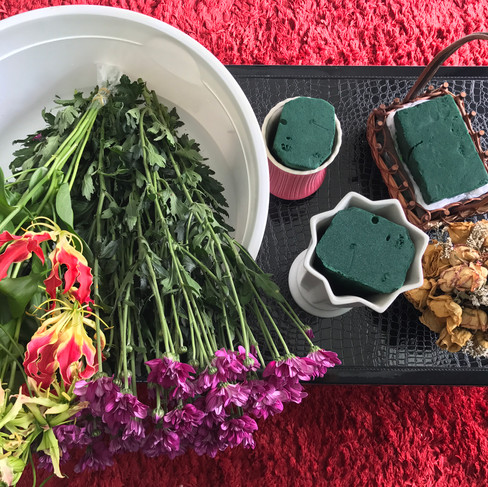Concern is at an all-time high regarding florists’ reliance on floral foam in design work. Due to environmental concerns, many florists are striving to reduce its use to the bare minimum, and some are refusing to work with it altogether. And this is not just confined to the florist industry, since 2021 the RHS has banned floral foam in competitions and installations at the Chelsea Flower Show.
What is floral foam made from?
Phenolic Resin Floral Foam to give it its full name, is a single use plastic product, developed in the 1950s, made from phenol and formaldehyde, a combination similar to that used in house insulation.
It is toxic and non-biodegradable. Once disposed of it very gradually breaks down into ever smaller particles which eventually become microplastics, a large quantity of which end up in rivers and the sea via the sewage system and then make their way into marine life.
What are the Alternatives to Floral Foam?
Sideau® and FibreFloral™
From Agra Wool International and Smithers-Oasis respectively, these products are made from basalt mineral rock fibres which are compressed into thin layers to create a block which is then bound with a sugar-based agent made from beet or cane. It is reusable and biodegradable and can be composted in small quantities or, if sent to landfill will biodegrade back into rock dust which is also a soil enhancer.
It should be cut with a serrated knife, and it’s recommended that you either wear gloves or wash your hands after use as the fibres can be an irritant. It is most effectively used on its side, inserting flowers in between the layers, although you may need to make a hole for thicker stems.
Also from Oasis comes TerraBrick™ a floral media made with plant based, renewable natural coir (the outer husk of a coconut). Bound with a compostable substance it has excellent water absorption and can be rewetted to extend flower hydration.
The winner of Interflora’s ‘Most Sustainable Floristry Innovation Award’ held at the recent World Cup was Phoam Lab - Could this be floral foam’s successor?
So, alternatives are out there and there is a real drive and incentive for companies to continue to develop and improve their products.
Can we manage without floral foam? We may have to.

Want to learn about how to make your business more eco-friendly? Check out Karen Barnes' article which takes an overview look at florists and how we can be more eco-friendly as businesses.
Related articles:

Su Whale is a florist and freelance writer with over twenty-five years' experience in the floristry industry. She is the author and publisher of three best-selling books: Cut Flowers, 4th edition (2020) Cut Foliage, 2nd Edition, (2021) and Houseplants (2019), all bookshelf essentials for the professional florist.





